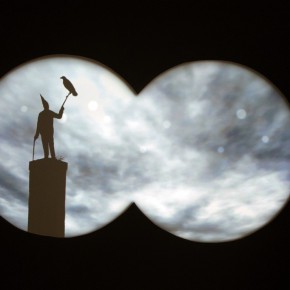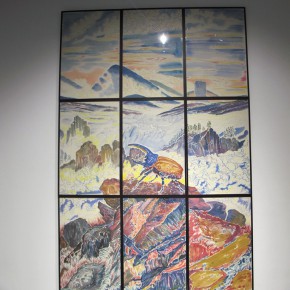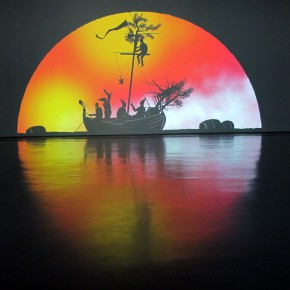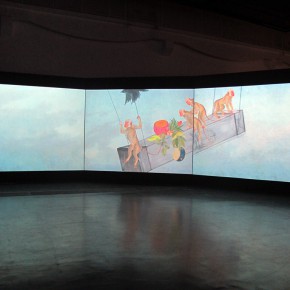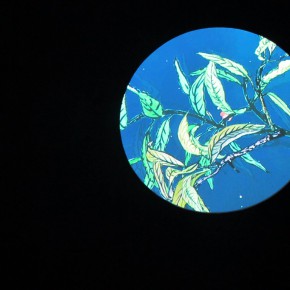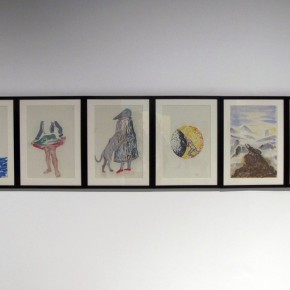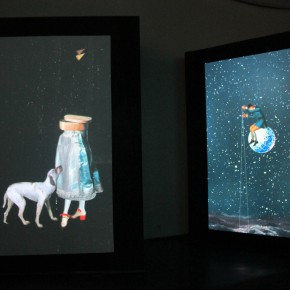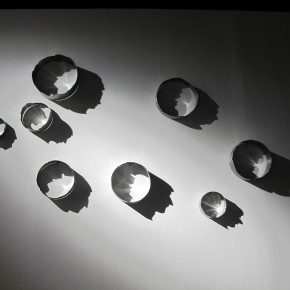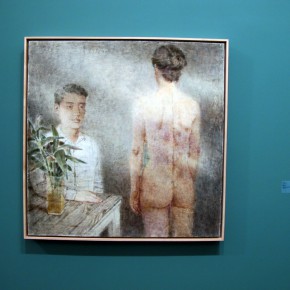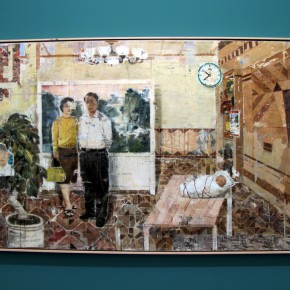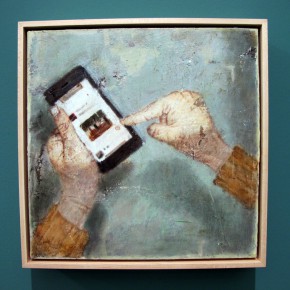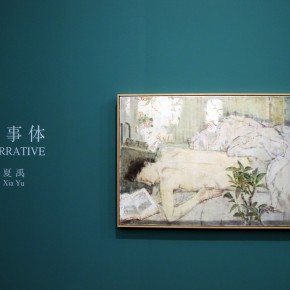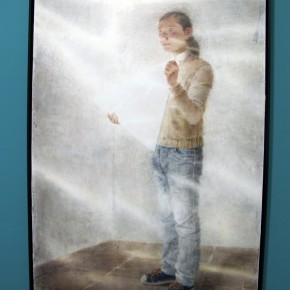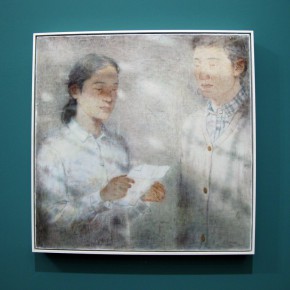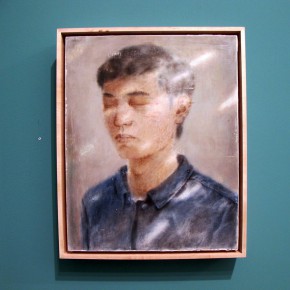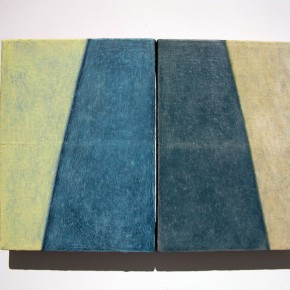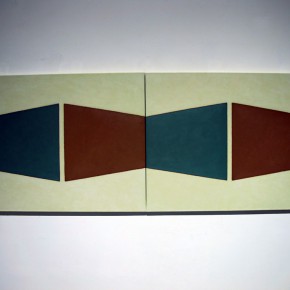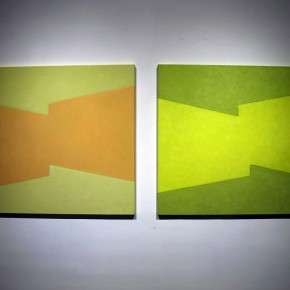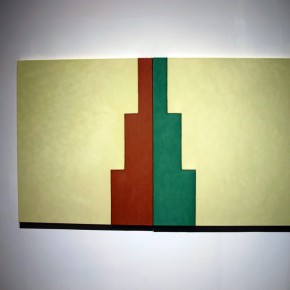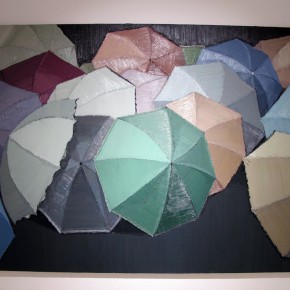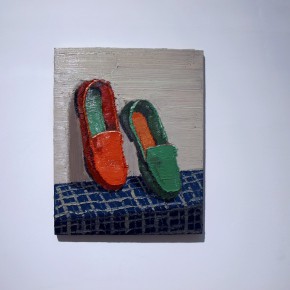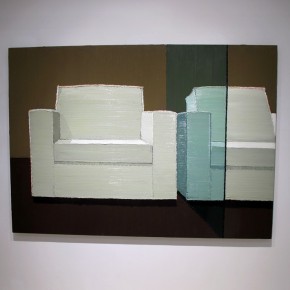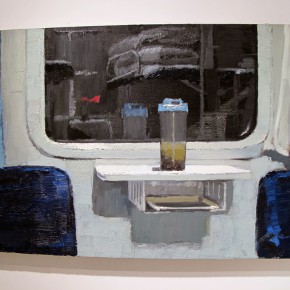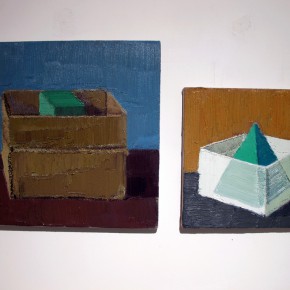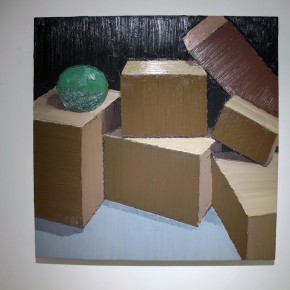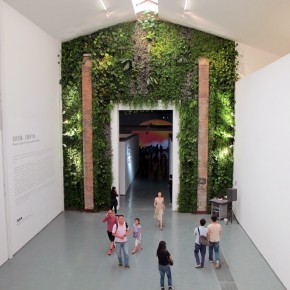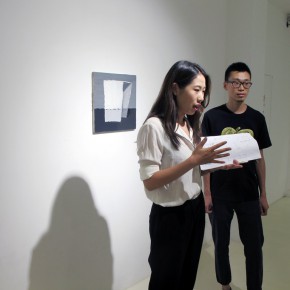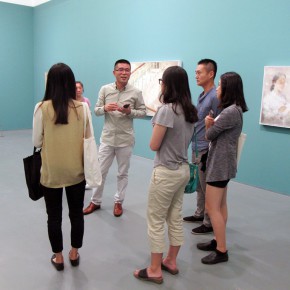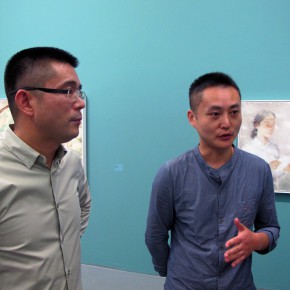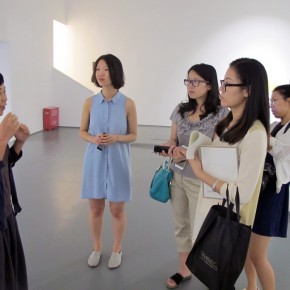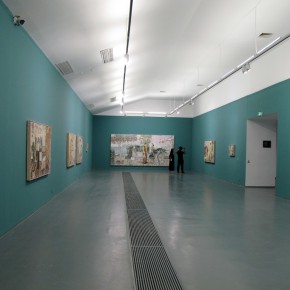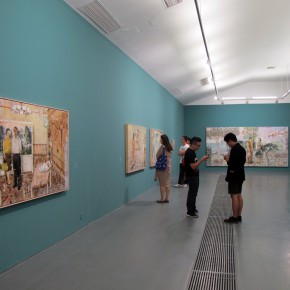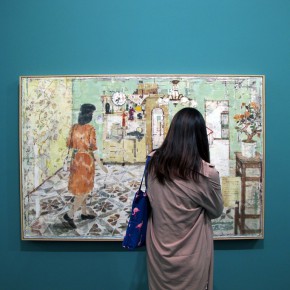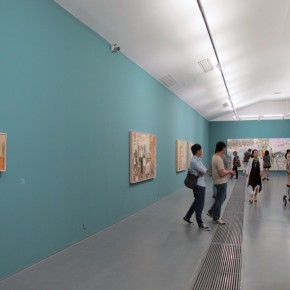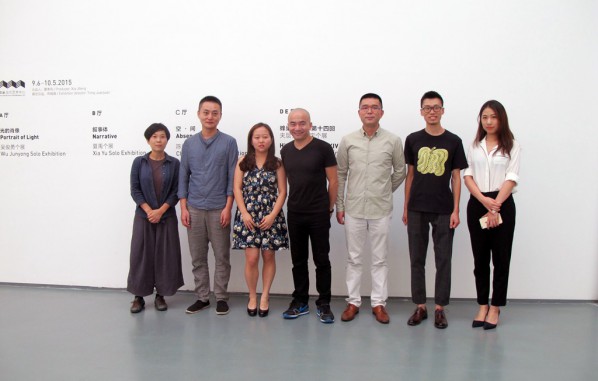
On the afternoon of September 6, there were four exhibitions respectively entitled “Wu Junyong: Portrait of Light”, “Xia Yu: Narrative”, “Chen Lizhu: Absence – Space” and “Hive • Becoming XIV Inter-Layer: Zhao Xinyu Solo Exhibition.” All of these four artists were born in the 1970s, their creative medias involve oil painting, tempera, installation, multimedia, video and so on. These four exhibitions separately showcase their creations in recent years, and the ecological characteristics of contemporary youth art were partially revealed in the exhibitions. They will remain on view till October 5, 2015.
Wu Junyong: Portrait of Light
The exhibition in the A Hall features Wu’s works including animations, installations, animation installation and paintings created during the past five years which reflects his recent stylistic trend: his works shift gradually from the absurd and black-humor reference to reality to the relatively implicit and mysterious way of expression; with various medias, Wu has realized the representation of pure “light”.
Wu Junyong was born in 1978 in Fujian Province. He is currently the lecturer at China Academy of Art where his BFA of Printmaking and MFA of New Media Arts are granted. In 2003, Wu began to apply with the animation and the Internet as major creative medias with which he was overwhelmingly applauded for works as A Dictionary of Slang, Chaos of Phases. His works have been exhibited and collected by museums and art institutions worldwide.
In Wu’s account, the world reveals itself as a kaleidoscope which does not represent the reality outwardly while provides us with a vision rooted in mind where scatters light and shadow of the universe deprived of its common visage. In the flickering space of imagination, he relates the ephemeral legends with moving images of force and passion. As Wu declares: “Though working with new media, I am concerned with the tradition,” he indulges in the poetry of pure light and shadow yet constantly explores the artistic forms of “new media” in order to translate the classics and traditions into disparate aesthetic languages. “Baptized” by Wu, parables, tales, epics, allusions and folks escape from their original cultural context and approach the extremity of imagination. As a “hunter of light”, he struggles to depict the “portrait of light” and challenges the “speed of light”. In Eclipse of Sisyphus, Moon Sing, Portrait of Crater and Cloud’s Nightmare, Wu creates unintelligible scenes in the form of “silhouette” to portray various figures of light. Time of Stomach inscribes the “epic of light” intending to cast light on the truth buried beneath the discourse with the equivocal images and symbols. The double-screen work Portrait of Light juxtaposes two screens and operates “binocular montage” so that spectators would have to “edit” the parallel images so as to comprehend the mysterious tropes: the work is organized in terms of the clue of “light” by which Magritte-style riddles are coined. Moreover, the work combines the classical painterly works in the storage of Google Art Project with Wu’s original images to converse with the artworks and discuss the “way of being” of artworks in the technological horizon.
Wu’s earlier works may emphasize on the ideological criticism and political irony, while he is no longer satisfied with the relatively direct way of expression. He devotes himself to representing the fantastic carnival of images; now the man wearing top-hat is not hurried to express himself yet integrated in the profound cultural settings of times.
Xia Yu: Narrative
The exhibition presents the works of this eye-catching emerging artist created during the last two years.
“Narrative” conveys a neutral attitude since Xia Yu has always preferred to stay closer with the frame and keep distance with the picture and word. Obviously, he shows more interests in the pure and personal pictorial language so that “narrative” could be merely a self-mockery saying and whether the narrator should be reliable remains a question.
As for the recent tempera works of Xia Yu, light becomes the major element in the frame where the atmosphere depicted immerses in. In some works, the fluctuation of light supplies the frame with a tint floating out of the reality. The scene is at once limited and multi-dimensional as the ambiguous clue is stretched toward the exterior space; In other works, the light jumps inside the frame from one side since Xia erases the existence of windows; as a result, the intervention of light seems to be acquiesced in the interior space which signifies the cancellation of the “fourth wall” in theater; sometimes the light and water form a collusive relation with which the expression in the frame turns out to be somehow evasive.
The large-scale works present a mottled texture as Xia deals with common interior scenes in our daily life in the way of “seemingly unintentional destruction” which might suggest the impulse concealed beneath the superficial stillness. The interior scenes in the frame bears a style of decoration that has been popularized since 1980s. The masked, scratched and peeled-off effect imitates the abrasion of squared floor, flowered wallpaper and landscape screen referring to the dissolution of the emotional structure and the socio-cultural mode.
As the largest work in the exhibition, Farewell discloses the “narrative” spot “Peripatetic Ferry” whose name originates from “Peripateticism” in Chuang Tzu thanks to the word appearing on the right side of the frame. “Peripatetic Ferry” was documented during the period of the Three Kingdom as an ancient ferry in Feishui that rests not far from the birthplace of Xia - Feidong of Anhui. Xia does not evade his own memory that connects intimately with time. “Peripatetic Ferry” may not be the ancient one yet any ferry. In fact, the memory inevitable is properly the daily life and his works provide us with the beauty discovered in common things.
Chen Lizhu: Absence – Space
Chen Lizhu was born in Fujian in 1979. From 2005 to 2007, Chen studies at Frank Mohr Institute, Minerva, Hanzehoge school Groningen in Netherlands; from then on, she launched her abstract artistic career. During this period, once she even abandoned the form of painting and dealt with the media of installation. These experimental works reflect effectively the pictorial way of thinking suggesting a classical and abstract complex of painting.
Chen is fairly sensitive to color. After her return to China, she reemployed painting as major creative media and conducted her experiment with the poetics of color. From 2007 to 2009, Chen Lizhu started to consider and study “the nature of color”–“studying color like scientists in a lab, for example, how does warm and cold colors “coexist”, how the colors appear in different environment of humidity.” From 2010 to 2012, she spent two years studying Malevich’s Black Square and her final accomplishment was a small painting, Farewell to Malevich. In the picture, two little corners were cut off from Malevich’s black square along the diagonal line. This seemingly simple action changed the picture’s state from static to dynamic. What was more important, the picture changed from planar to three-dimensional: from one black square in one plane to two black squares overlapping in the space. That was how Chen Lizhu started her space experiment which marks her Space Series.
The Space Series, being created since 2012, will be the major works featured in this exhibition.Chen Lizhu loves Chinese Gardens, particularly the traditional technique of “borrowing scenery” which brings the scenes outside the garden in the interior viewing horizon of the garden. She uses the same technique in the frame that involves the infinity in the limited space. The “habitable and enjoyable” space suggested by Guo Xi, the theorist in Song Dynasty, is the style that she intends to pursue. The spectator can imagine himself inside the painting and follows the frame (color and form) as it shifts; the way by which she deals with the space may be regarded as that of the public architecture. The Space Series reveal as a group or a series which create the continuity of time and extends the spatial viewpoint. Chen Lizhu hopes to provide the spectator with the time of “reading” and “walking” ; in the “Space”, Seeing is no longer “appreciating” a painting in the traditional meaning.
Hive•Becoming XIV Inter-Layer: Zhao Xinyu Solo Exhibition
Zhao Xinyu's solo exhibition in the D/E halls feature Zhao’s works since his graduation in 2012.
Zhao Xinyu is good at supervising the whole frame by “object-shaping” and “scene-transforming”. His final project represents a series of bright and quiet train compartments where the supposed clamor has been deliberately omitted; though the tea cup on the table may suggest the existence of people, only the simple objects remain.
Since 2013, Zhao begins to “construct scenes” by taking a sequence of daily life or by organizing the objects in an absurd manner to interpret the extraordinary spatial logic. The artist strives to represent the form, texture and color of the objects regularly masked behind the dazzling background so that their commonly-ignored details are magnified. The humorous “observation” of the objects leads to another way of scene-constructing with the purpose of the interaction with objects and the interaction among objects. The dislocation of the objects bears a tone of humor. As for these works with relatively complicated scenes, the absence of people makes the objects become the protagonists in terms of personification.
In his most recent works, Zhao has narrowed down the domain of “scene-constructing” to one object in order to pursue the simplicity. The identity of the scenes is obscured and the frame becomes the close-ups of one or several objects. When reflecting upon the relationship of picture and painting, Zhao makes efforts to “guarantee the existence of painting”; when discussing the basic pictorial elements like space, structure and color, he emphasizes on the particular media of painting as well. Furthermore, as the paint becomes heavier, a three-dimensional sense emerges thanks to the intervention of volume of paint and strokes applied. Zhao intends to reconstruct the objects in the most powerful field of painting with a sense of matter generated by the media of oil-painting so as to simplify the objects as pure forms: the basic elements like form, color and light get rid of narrative, metaphor or ideology and become the absolute protagonists.
“Inter-Layer” refers to the middle layer of real paint as well as a in-between state. As an emerging artist, Zhao makes an attempt to experiment with the field that attracts him constantly; he locates himself in the buffer zone between avant-garde rebellion and conservatism so as to reach the state of freedom.
Text and Photo by Zhang Wenzhi/CAFA ART INFO
Courtesy of the artists and Hive Center for Contemporary Art, for further information please visit http://www.hiveart.cn/.



